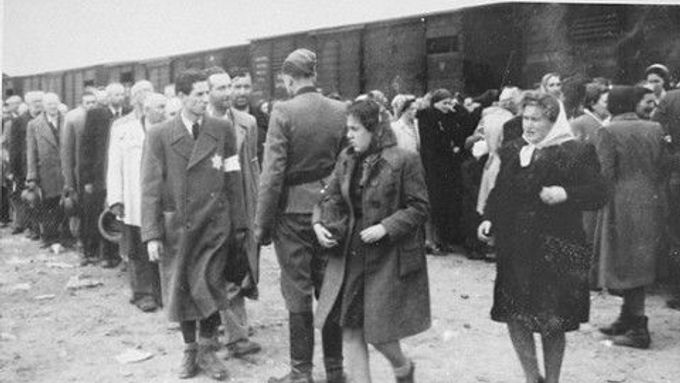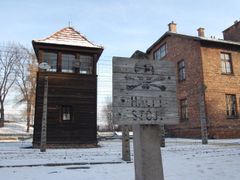Prague - Based on a weekly program of the same name aired on Rádio Česko, Aktuálně.cz brings you a series of articles about life stories of Czechs and Slovaks who have lived through the pivotal events of the last century.
Interviews with survivors were collected with the non-profit organization Post Bellum, which collects testimonies of Czechoslovak soldiers from World War Two.
Lives that should not be forgotten
Some of the stories are truly hard to imagine. Take for example the story of a Jewish Slovak woman, Štefánie Lorándová, who as a member of a Zionist youth movement Hashomer Hazair used every trick in the book to outsmart the Nazi machine and saved hundreds of Jewish lives.
Or, Miloslav Komínek, who, after having been shot while crossing the border of communist Czechoslovakia and having been sentenced to imprisonment by a distant uncle, decided to join an anti-communist resistance group, earning him a second sentence in a coal mining labor camp.
The testimonies would not be complete without witnesses from the other side of the fence. Josef Klesa, who was a prison warden at one of the best known political internment facilities under communism speaks of witnessing the execution of general Heliodor Píka, and the communist re-education that was mandatory among the wardens.
These are the stories of Czechoslovakia and its people that should not be forgotten.
-----------------------------
The story of Štefánie Lorándová
There are often questions quietly lingering behind the discussions of the Holocaust and Hitler's 'Final Solution'.
Why did the Jews not defend themselves? Why did they not all revolt and allowed themselves to be locked away in ghettos and concentration camps, murdered in gas chambers?
These questions often ignore historical facts as well as sometimes forgotten life stories. Štefánie Lorándová's story is a resounding response of defiance to all of these questions.
She was one of many who did fight back against many odds. The young Czechoslovak was a member of the Zionist youth movement Hashomer Hatzamir (Heb youth guard), whose members actively opposed the Nazi machine at the uprisings in the Warsaw Ghetto or in Auschwitz, Treblinka and Sobibor, fighting in Allied armies, as well as taking part in illegal activity, attempting to save lives of others.
Born in Michalovce (today in eastern Slovakia) in November 1919, in a well-off observant Jewish family, Štefánie spent a quiet childhood with her sister and cousins.
Her father, Ludvík Loránd, who managed a power station, died suddenly in 1928. When her mother moved to Žilina with the children, Štefánie began a new life. By the late '30s, when the situation for European Jewry was becoming increasingly precarious, she was already a mature young lady, an activist in the left-wing Zionist movement, who could take care of herself.
Getting across the border
Members of Hashomer Hatzamir, as other Zionists in Europe, were preparing to move to Palestine to escape Hitler's restrictions and deportations. As World War Two started, it became clear that few would get this chance.
Efforts of the youth organization were thus shifted to trying to save relatives and friends by smuggling them to safer countries. In the neighboring Hungary, where deportations to Nazi extermination camps did not begin until April 1944, the situation was relatively safer than in Slovakia.
Štefánie was sent to Budapest to make preparations for the arrival of the "refugees" from her homeland. She crossed the border with the help of smugglers on March 9, 1942.
Štefánie or Margita?
She lived in Budapest under a fake alias Margita Demeterová. Her main responsibility was to secure papers, places to live and money for the Jews coming from Slovakia.
Her non-Jewish appearance and perfect knowledge of a number of languages, including Hungarian and German, worked to her advantage.
She was able to cleverly trick Hungarian officials and obtain birth certificates of real persons, which she forged, along with local police registrations.
These forged documents provided new identities for hundreds of people. The money, necessary for the refugees to start a new life, Štefánie was able to pulled together with the help of the international Jewish aid organization JOINT. After some of the refugees were arrested, someone confessed about Štefánie, or rather Margita, and she was arrested
In a Nazi agency
The Hungarian police did not find out Margita Demeterová's real name, though, or the fact that she was Jewish.
She was sent to a criminal detention camp, where conditions were incomparably better than in any of the Nazi concentration camps meant for Jews and Roma. The elderly commander of the camp fell in love with her.
As she remembers: "I didn't let him do anything, he could only kiss my hand. Yet, I had an incredible position in the camp. A guard, for example, came to me and said, "Margita, I really want to go home for Christmas, could you put in a word for me?" And I said: "Alright, but I hear that you were yelling at the prisoners. I want none of that!"
When Margita Demeterová was released after nine months, she started to look for a job as a secretary and went back to collaborating with Hashomer Hatzamir.
Another unbelievable incident was in store for her. She saw an ad for an opening at some sort of an agency. When she went for the interview, she realized she was at a German news agency.
"There were pictures of Hitler on every wall, but at that point I couldn't just turn around and leave. Just imagine, I did a test and they told me they want to hire me immediately. I didn't know how to get out of it, so I told them I wanted an unthinkably high salary. And they agreed to it."
After the interview, Štefánie wanted to disappear and never come back to the firm, but in the end she took the job. Friends from the resistance convinced her, hoping to get to more information through her position.
The road to Auschwitz
After a few months Štefánie-Margita was arrested once again. This time it was serious. They found out who she really was. At the time, power in Hungary changed hands, and Hitler ordered Hungarian Jews to be transported to concentration camps in Poland and Germany.
In 1944, Štefánie Lorándová, along with her mother and sister, was sent to Auschwitz. "It was so terrible, that I can't really speak about it today. I just wanted one thing, to leave, to go work somewhere. I didn't know where they would take me, but I was certain that there could be no worse place on earth than Auschwitz."
Luck was on her side. With the help of fellow prisoners, who had heard of her resistance work in Budapest, Štefánie and her sister were sent to a labor commune. By a miracle, they ended up in the Sudetenland, the former Czechoslovak borderlands.
She survived the war, as did her sister and mother.
Today, Štefánie Lorándová is almost 90 years old and lives in Prague.









